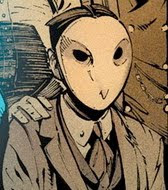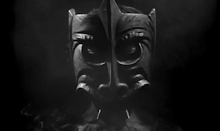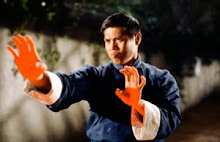
If For A Few Dollars More, had hinted at the fact that there was a different set of aesthetics then Hollywood’s. Seven Samurai, made sure that I would never again forget it. It of course helps to have a point of comparison. I mentioned that thanks to my Father I grew up with a pretty steady stream of the old Hollywood Westerns playing in my home. You best believe that The Maginficant Seven was part of that diet.
And don’t get me wrong, I’m not here to talk crap about that particular movie. It’s a lode of fun, a particularly good example of Hollywood craft with magnificent performances from everyone involved, with Steve McQueen, Charles Bronsan, and Eli Wallach all at their career best. Not to mention John Sturges, a Hollywood craftsman of the first order all too often forgotten today.
But it’s the quality that makes the difference between the two all too easy to spot. The Magnificant Seven is a prime example of Hollywood craftsmanship, The Seven Samurai is an example of effortless authenticity. The Seven Samurai is the work of people who have known hunger. The Magnificant Seven is the work of people with a good catering service.
The film portrays a culture of desperation. At the early scenes set in the a filthy inn the villagers stay at as they try to recruit Samurai, a desperate food seller attempts to sell to them, a pair of repulsive, unibrowed con men who serve as the film’s derisive greek chorus in the opening acts, and a blind seller. Everyone is in dire need, the merchant can no more afford to eat the food he has then the villagers can buy it. Even the bandits who plague the villagers are living in conditions even more squalid then them. Their motives aren’t greed, like the bandits in Yojimbo but survival.
And yet, as always it is the director’s vaunted humanism that wins out the day. Everyone, even the hideous cackling con men who mocked the villagers suffering with so much glee have a chance to show their better sides. This is not presented in the usual Hollywood manner of these bad characters having a change of heart, but as a simple inevitablility. Kurosawa honestly believes that if you give people enough time and opportunity they will behave decently. In one of the most moving scenes in the film, and Kurosawa’s career, the rice the peasants have to pay for the much needed Samurai is stolen, midway through the recruitment. The anger of the villager’s towards their comrade and misery of the pitiful man himself are so vividly portrayed, that when the rice is restored through an unlikely source. It feels like a breath of life. Its Kurosawa’s portrayal of humanity at its best. A man sacrificing so he’ll have the chance to sacrifice some more. Doing good so that he might do more good.
This balance is itself counterbalanced. Unlike many humanists Kurosawa has no delusions about how petty, small minded, and stupid people can be. His portrayal of the villagers makes them out to be stupid and cruel; easily swept away by their passion. They go from terrified sheep to a blood thirsty mob the moment a lone bandit is unlucky enough to fall into their clutches. Their impotent rage, personified by the old woman who totters forward carrying a hoe, too feeble to beat the thief to death without help, is like something out of Goya. Its an ugly portrait Kurosawa paints. Unlike another director who would be more apt to portray the villagers as a cheerful, industrious proletariat (say John Sturges) Kurosawa leaves it an open question as to whether or not these people are worth saving. After it’s revealed that the villagers have stolen from and even killed stray samurai from losing battles, one of the samurai casually mentions that he would happily murder every person in the village. And it is MEANT. Making it all the more moving when Kurosawa ultimately answers “Yes.”
It is this very quality that allows the Samurai’s actions to matter. If they where saving storybook helpless innocents, the Samurai’s compassion would be unremarkable. Instead Kurosawa uses a genre situation to illustrate the real world strength that compassion takes. We would all like to help “good” people, but the world we live in does not often afford us such clear cut choices, It is our compassion towards those that we do not like, those who are not perfect that matter. For compassion is at it’s heart empathy, and empathy rooted in understanding, to feel pity for and to try to help those who we do not comprehend easily is where compassion serves us. If it’s not difficult to do it scarcely matters.
Of course this makes the movie sound like a slog when it is really one of the most entertaining adventure films ever made. Kurosawa’s comic touch has always been on of his most underrated attributes, and scenes like the one in which the inestimable Takeshi Shimura tries to stroll down the road as no less then three parties; the peasants, Toshiro Mifune’s brash would be Samurai, and a callow green samurai, vie for his mentorship, thrum with his light comic touch.

It hardly even seems worth mentioning that the characters in Seven Samurai are unforgettable. Kurosawa is of course one of the great directors of the individual. Its not just Shimura, and Mifune in his career making, yet utterly singular role. In The Seven Samurai everyone is defiantly themselves.
If there is such a thing as an intimate epic Kurosawa has clearly made it here. He uses the mammoth Three and a Half hour running time not to impress with empty scale, but to imprint as much detail as he can. Taking the first hour to make sure you know all the samurai, taking the second to make sure that you understand the plan. As a result when the last hour hits, its not with the with the frenzied desperation of modern action, where its hoped you will glean some meaning from the proceedings, but with a sickening clarity and precision. Bandit and Samurai, you know who is dying and why.
He alsm makes time to lay in scenes like the meeting between the youngest of the samurai and a village girl in a field of flowers and soft light. Shot with sensitivity that not even some one like Ford would be capable of (Don’t believe me? Watch the Jeffery Hunter scenes in The Searchers). On their inverse he adds in scenes that would be more comfortable in Bergman, then in what the public thinks of a Samurai film. The film’s most haunting sequence, in which the captured and raped wife of one of the villager’s runs into the bandit’s burning fort rather then face her husband. Death is more appealing then having to be forgiven for her “crimes”.

The battle scenes, particularly the final ones set in a relentless rain storm that makes the fight into something at once exciting and stygian, are some of the best ever filmed. But to Kurosawa’s credit he never makes death look anything but ugly. While not the tableau of suffering he would make it out to be in Kagemusha, when men fall in the billowing clouds of dust, or sink into the mud, beaten or impaled, it is always, no matter what side they are on, a sickening thing.
Kurosawa’s career is like a rich vein, for the cinephile, once tapped it becomes seemingly inexhaustible made up of dozens of films. Only a handful of which are anything less then great, and all of which reward extensive rewatching. Some sniff at Kurosawa, laying his success at the feet of exoticism. Others blaming his westerness, especially in comparison to Ford (As a side note, I’ve always found that the comparison of the two directors spoke more of Easterness in Ford rather then Westerness in Kurosawa. After all is not Ford’s central image that of small impermanent people in the foreground dwarfed by large eternal landscapes also the central image of traditional scroll art?)
But Kurosawa’s greatness has little to do with the pageantry of his frames, in his period films. What makes Kurosawa great is the way he captures better then just about anyone what Scorsese referred to in one of his finer moments of film criticism as “The terror of compassion.” And the first term is not hyperbole. Nor is the term grand master, when it is applied to Kurosawa.





































































































2 comments:
Amazing movie top to bottom. Amazing performance from Mifune as Kikuchiyo, the tragi-comic 7th samurai. I cannot watch this film without getting choked-up over the scene when Kikuchiyo, having found the samurai armor amongst the farmers, unleashes that emotional rant at the other samurai revealing so much of his world and the truth, as he sees it, as it pertains to the farmers. NIce post.
Thanks Gid.
Mifune's performance is amazing. Its so unlike his other work, and yet it made his name.
Post a Comment